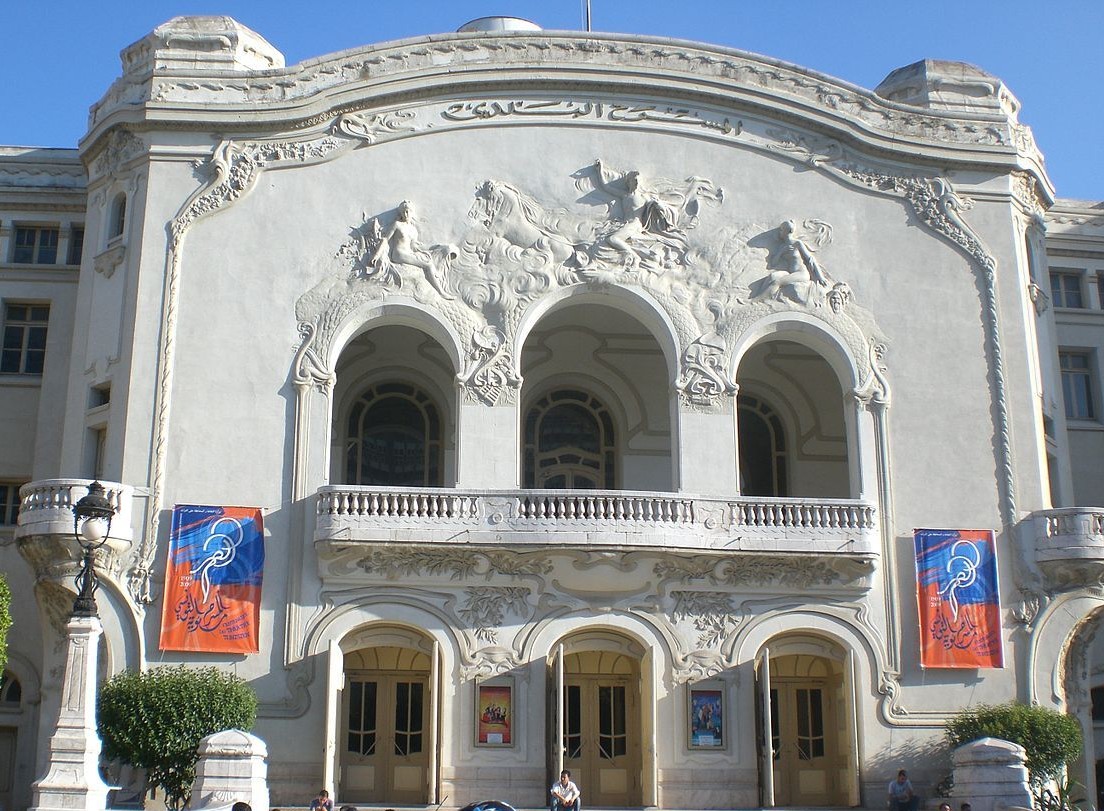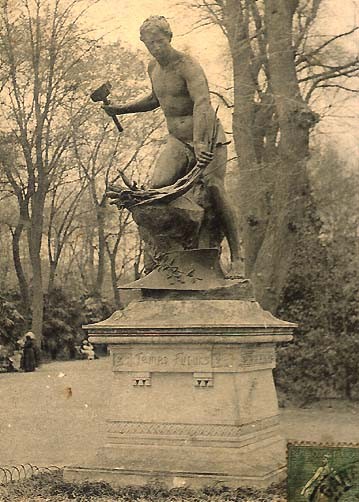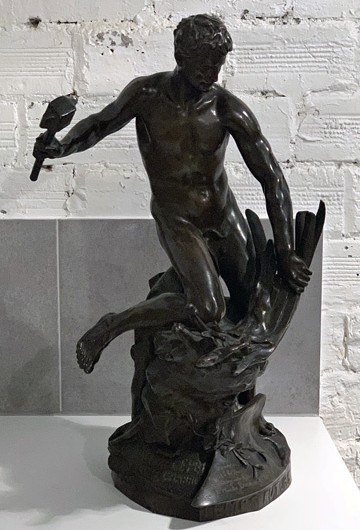Jean-Baptiste Belloc, 1863 – 1919
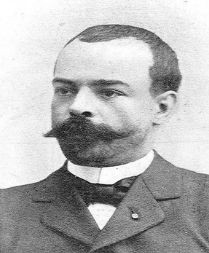
Jean-Baptiste Belloc was an accomplished French sculptor of Catalan descent who worked mostly in bronze. Born to sculptor Antoine Belloc and Baptistine Marceline Joséphine Ribes on April 30, 1863 in Pamiers, France, Belloc first studied drawing under the sculptor François Lacombe in Perpignan. He earned a scholarship in 1871 from the city of Perpignan to study in Paris. In 1882, Belloc was admitted to the École des Beaux-Arts in Paris and worked under Jules Dumont, Jean-Marie Bonnassieux, and Gabriel-Jules Thomas. He joined the atelier of the noted sculptor and painter Antonin Mercié and made his début at the Salon des artistes français in 1888, annually exhibiting works until at least 1905. He also regularly exhibited at the Society of Painters from 1879 to 1910. The second Grand Prize of Rome was awarded to his bas-relief plaster sculpture, Le Spartiate Othryadas, in 1890.
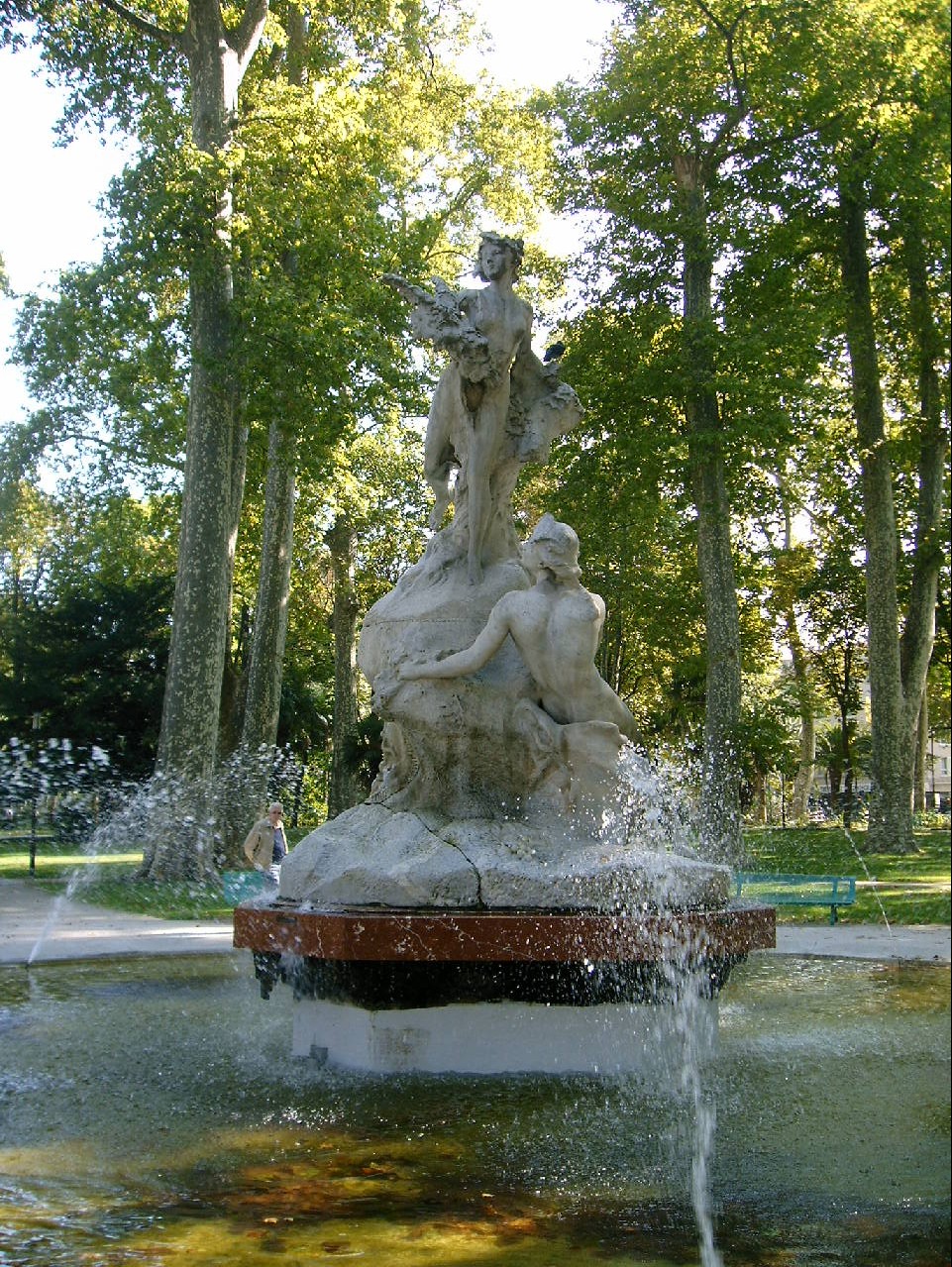
Belloc's Paris residences were all within walking distance of 4 rue de Chevreuse: from 1889 – 1890, he lived at 18 bis rue Denfert-Rochereau; from 1891 – 1903 he lived at 22 rue Denfert-Rochereau; from 1903 – 1905 at 70 boulevard du Montparnasse. In 1903, he became a member of the Société des artistes français. The Musée d'Orsay database lists many of his Salon entries:
- 1888: Portrait de M. L. M..., médaillon marbre
- 1889: Portrait de M. Jean Gusquière, buste, marbre; Portrait de Mme Taillavigne ; buste, plâtre
- 1890: Mme Tallavigne ; buste, marbre
- 1891: M. Nicati, buste, marbre; Mme G. D... ; buste, marbre
- 1895: Temps futurs, statue, plâtre, "Je changerai l’épée en un soc de charrue" (Isaïe)
- 1896: *Tobie et l'ange, groupe, bronze; Temps futurs, statue, bronze
- 1897: Brunehilde (Walkyrie), statue argent, or, bronze, ivoire et pierres précieuses; Mme Desbordes-Valmore, buste argent et ivoire
- 1899: Portrait de Mme René Millet, buste, marbre; Portrait de Son Altesse le bey de Tunis ; buste, marbre
- 1900: *Violette, buste, marbre
- 1903: *Porte-étendard tunisien, bronze; Le pain, groupe tunisien, bronze
- 1904: *Violette, buste, marbre; Une boucle de ceinture en argent
- 1905: *Danseuse, bas-relief, marbre polychrome; Le Printemps et Bacchus, fontaine en marbre
Belloc traveled to North Africa in 1897 and was appointed the official sculptor of the French Ministry of Colonies. He produced a number of works in Tunisia and Algeria and is especially known for his bas-relief on the façade of the municipal theater in Tunis, an art nouveau building that opened in November 1902 as the Casino Municipal de Tunis.
Although Belloc produced a large number of statuettes and bas-reliefs in patinated or gilded bronze, commemorative monuments seem to have been his forte. He executed many of these monuments with the architect Ferreol Carbasse, whom he had met at the École des Beaux-Arts. These monuments are scattered across Tunisia, Algeria, and France. Several of Belloc's bronze sculptures were requisitioned by the Vichy regime during WWII and melted down to contribute to the Nazi war effort; others were moved repeatedly until they found their current locations. The rest have quietly disappeared with time.
Many of Belloc's monumental works pay homage to France's colonial past, glorify France's great military men and their victories and conquest, or, paradoxically, evoke the importance of peace:
- 1892: Canet-en-Roussillon, bronze bust commemorating Joseph Cassanyes, French revolutionary, mayor of Canet-en-Roussillon, and deputy to the Convention nationale from 1792 – 1795. It was melted down by the Germans in 1941 and was replaced in 1959.
- 1894: Banuyls-sur-Mer, monument to those who died in the war of the Pyrenees (1793 – 1794).
- 1895: Perpignan, monument commemorating the soldiers of the region who died in the Franco-Prussian war (1870-1871), conceived with Carbasse.
- 1895: plaster model of a powerful homage to peace, Les Temps futurs, exhibited at the Salon des artistes français.
- 1897: Perpignan, life-size cast of Les Temps futurs in bronze. Melted down during WWII.
- 1902: Saillagouse, bronze bust of the sculptor Alexandre Oliva (1823-1870) atop a marble obelisk conceived by Carbasse.
- 1905: Perpignan, plaster cast of Printemps et Bacchus, exhibited at the Salon and later installed as a monumental marble sculpture fountain.
- 1906: Nîmes, monument to the architect Henri Revoil, melted down during WWII.
- 1908-1909: Constantine, monument to Général Lamoricière, recounting Lamoricière's capture of Constantine (Algeria) in 1837. It was moved to the general’s French home in St Philibert de Grand Lieu in 1969.
- 1911: Skikda (Algeria), monument commemorating the third regiment of Zouaves.
- 1913: Paris, a sculptural ensemble of allegorical figures representing France’s colonial expansion. The monument was completed after his death. Today, dilapidated fragments can be found at the Jardin Tropical, which Robert Aldrich rightly labeled a "virtual theme park of French colonialism on the outskirts of Paris" (199).
Jean-Baptiste Belloc died at the age of 55 on January 23, 1919 at his home, 129 rue de l’Université in Paris. He was buried in his family’s tomb in the Cimetière Saint-Jacques of Perpignan. His widow donated several of his works to the Musée Hyacinthe-Rigaud in Perpignan.
A small bronze cast of LesTemps futurs from 1897 made its way to 4 rue de Chevreuse at an unknown date. It had been gifted to the Société pour l’arbitrage entre Nations in the name of Charles Brunet, a contemporary French pacifist. Belloc signed LesTemps futurs and inscribed it with the phrase, “J’ai changerai l’épée en un soc de charrue,” meaning, “I will change the sword into a plowshare.” This concept of transforming military weapons into tools that could be used by civilians in peacetime hearkens back to the Bible’s Book of Isaiah (2:3-4) and has long been used by activists to oppose war in many cultures and centuries.
Sources
- Aldrich, Robert and Martyn Lyons, eds. The Sphinx in the Tuileries and Other Essays in Modern French History. Sydney: Department of Economic History, University of Sydney, 1999.
- Belloc, Jean-Baptiste. "Danseuse." Gilt bronze relief. David & Constance Yates European Sculpture, Oil Skeches & Drawings.
- E.V. de R. "Le Comte d’Abbes et le sculpteur catalan." Revue Catalane, April 15, 1907. Internet Archive.
- Fonquernie, Laurent. "Quand Le Roussillon du sculpteur Belloc devait marquer l’entrée de Perpignan." Institut du Grenat. March 15, 2015.
- Hubbel, Amy L., Natsuko Akagawa, Sol Rojas-Lizana, Annie Pohlman, eds. Places of Traumatic Memory: A Global Context. Cham, Switzerland: Palgrave Macmillan, 2020, pp. 141-142.
- "Jean-Baptiste Belloc." La Promenade des Platanes: deux siècles au coeur de Perpignan.
- "Jean Baptiste Belloc Bronze Sculpture at JENNMAUR Gallery."
- "Monument aux Mortes, 1870-1871." Mairie de Perpignan.
- Postcard depicting the Roussillon monument in Perpignan. Archives Haute Garonne.
- Salons 1673-1914 (database). Musée d'Orsay.
- "Vestiges à la gloire de l’empire colonial." Brèves d'Histoire.
